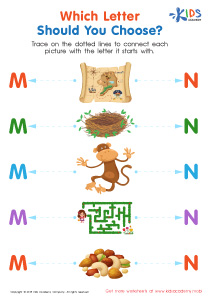Lowercase identification Lowercase/Small Letters Worksheets for Ages 3-6
5 filtered results
-
From - To
Unlock the world of letters with our Lowercase/Small Letters Worksheets for ages 3-6. These engaging, fun-filled printables are expertly crafted to help young learners identify and practice lowercase letters. Through a variety of interactive activities, children will develop strong foundational skills in alphabet recognition, setting the stage for successful reading and writing development. Perfect for parents and teachers, our worksheets provide an enjoyable and effective learning experience that caters to the unique needs of early learners. Let’s embark on an educational adventure and make letter recognition easier and more enjoyable for your little ones!
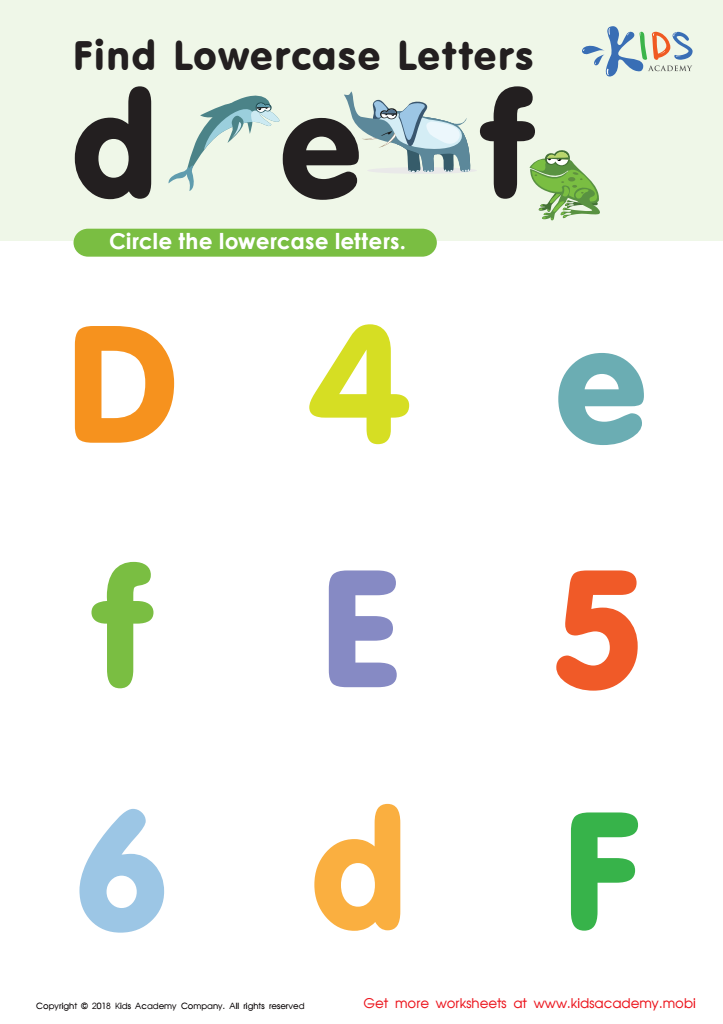

Find Lowercase Letters d e f Worksheet
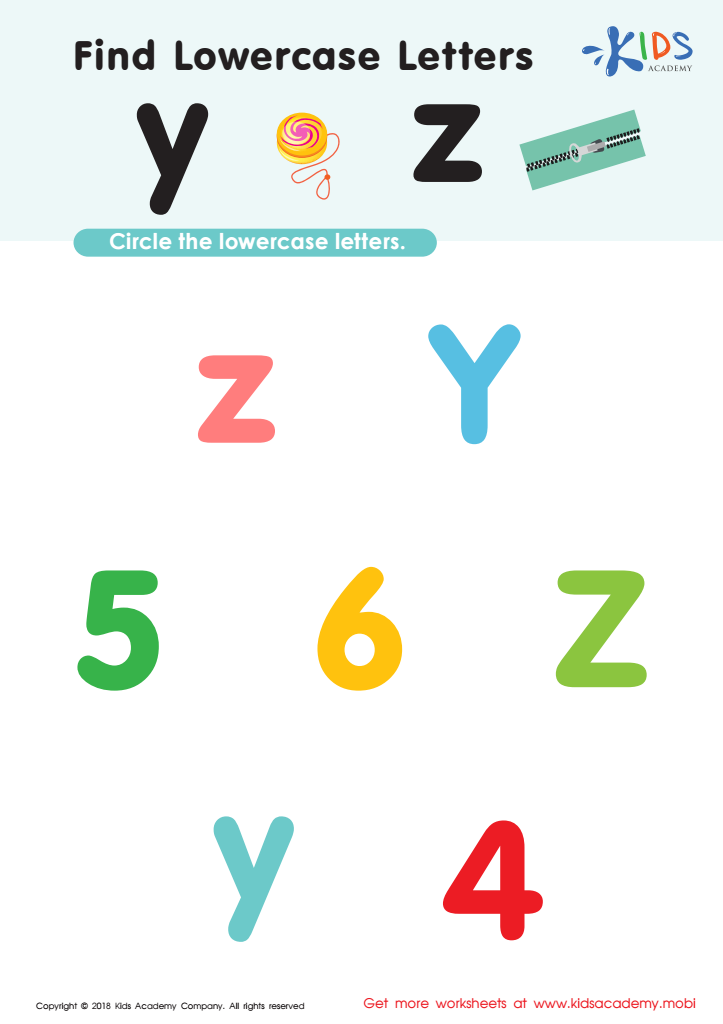

Find Lowercase Letters y z Worksheet
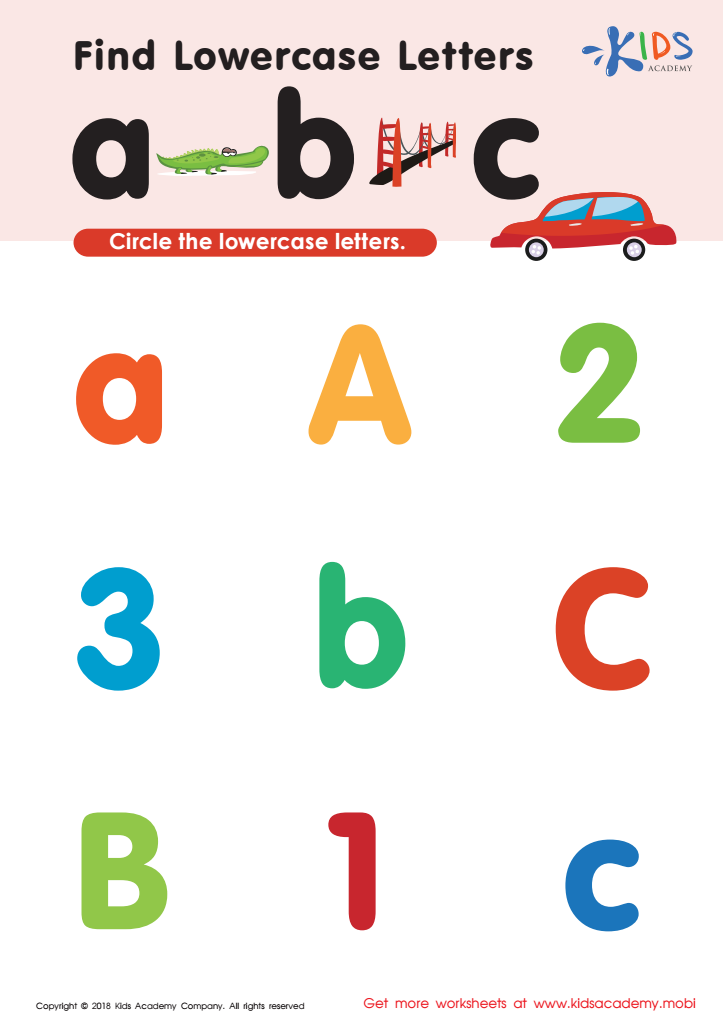

Find lowercase letters a b c Worksheet
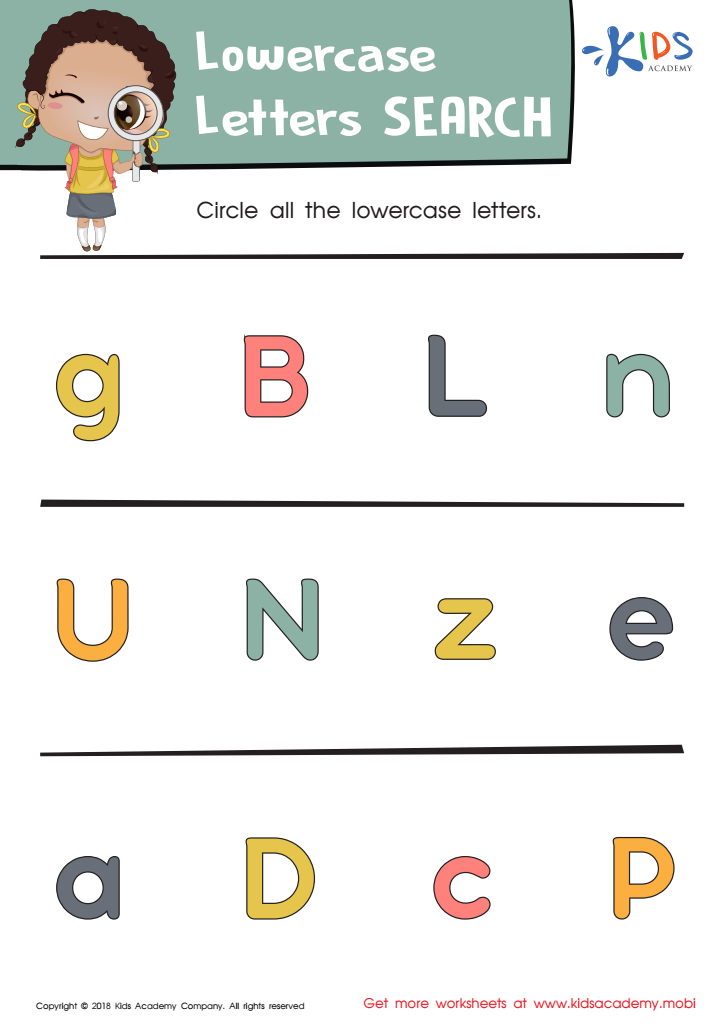

Lowercase Letters Search: Assessment Worksheet


Find Lowercase Letters v w x Worksheet
Lowercase identification is crucial for children aged 3-6 because early recognition sets a strong foundation for literacy. Adults—parents and teachers alike—should prioritize this skill to enhance children's reading and writing abilities, essential for their overall educational development.
Lowercase letters comprise the majority of text children will encounter in books, signs, and written communication. Familiarity with these letters ensures young learners can access a broader range of reading materials. This early engagement with text nurtures a love for reading, boosts vocabulary, and improves comprehension skills.
Well-developed lowercase letter recognition also supports children's writing skills. Adequate practice helps them differentiate between uppercase and lowercase forms, promoting accurate and legible writing. This skill is pivotal during early schooling where clear communication of ideas through writing is first cultivated.
Additionally, early mastery of lowercase letters fosters confidence in young learners. As children successfully identify and use these letters, they feel a sense of achievement and are more motivated to engage with learning activities.
In summary, prioritizing lowercase identification for children aged 3-6 paves the way for effective reading and writing, nurtures a positive attitude towards learning, and underpins future academic success.
 Assign to My Students
Assign to My Students







